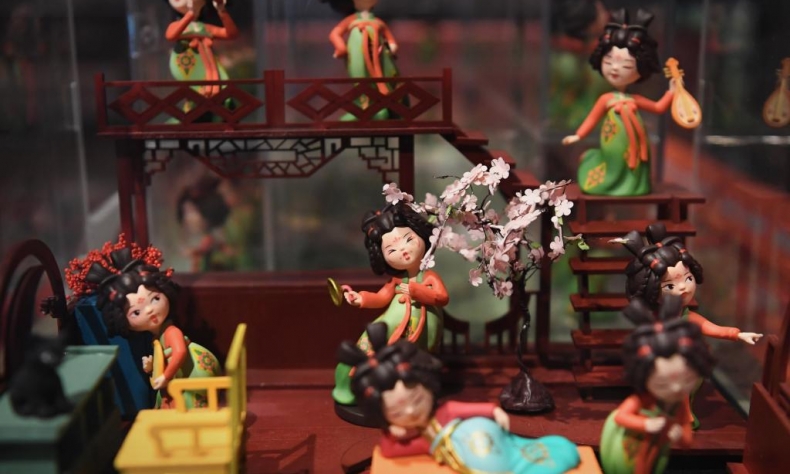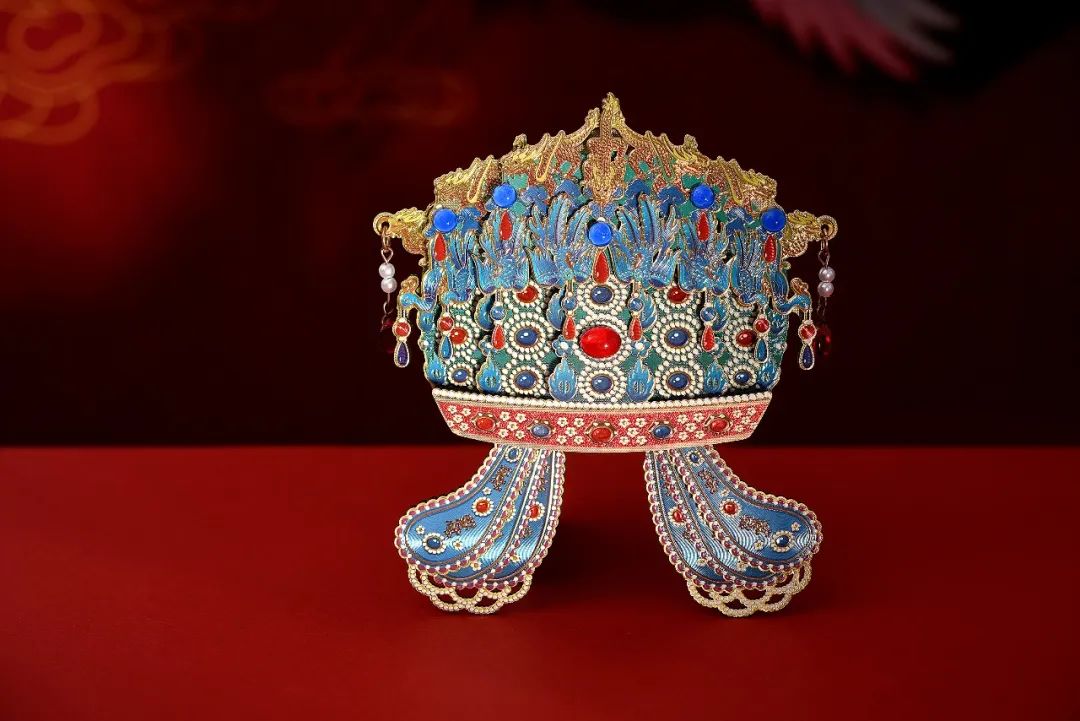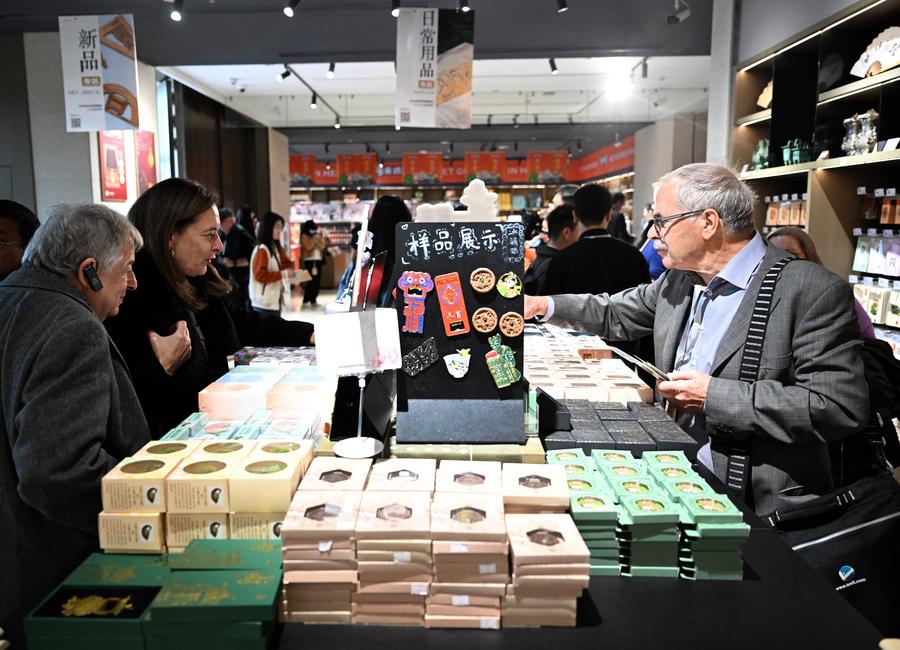Small Treasures, Timeless Tales

By integrating traditional culture into modern life in a bold and light-hearted way, these initiatives nurture pride in the identity of younger generations, while breathing new life into museums – both culturally and economically.
The National Museum of China’s phoenix crown magnet, considered the jewel in the crown of the country’s cultural souvenirs, hit a milestone on 25 March, selling over 1 million units in just eight months and six days. Since last autumn, visitors have been queuing before dawn to get their hands on this star product whenever the museum is open. Liao Fei, managing director of the museum’s cultural development company, revealed that around 20 series inspired by the phoenix crown have been launched, generating sales of over 100 million yuan ($11.5 million).
Faithful reproductions of heritage treasures are becoming micro-museums that celebrate the splendour of Chinese civilisation. Examples include the celestial palace coffered ceiling from Beijing’s Museum of Ancient Architecture, a celadon-blue porcelain cup with red accents from the Hangzhou Museum, and a painted bronze lamp featuring a goose and a fish from the Shaanxi History Museum. These miniature masterpieces, often miniaturised as magnets, retain their intricate details while gaining a new lease on life through innovative contemporary design.
This creative transformation breathes new life into traditional culture, enabling younger generations to rediscover it in their daily lives and feel a sense of pride in it.
The alchemy between creation and market
The phoenix crown magnet’s success lies in its ability to resonate with the public. Its meticulous aesthetics, immersive experience, and careful craftsmanship – down to each hand-glued bead – make it a desirable item and a cultural symbol, particularly popular among young people. Today’s consumers, seeking aesthetic and spiritual fulfilment, prefer objects that carry meaning and are crafted with care.
Qin Fei, managing director of Hangzhou Gongbo Cultural Creativity, said: “Magnets are practical, affordable, and rich in meaning. They’re not just objects; they’re miniature works of art that satisfy the desire to admire and collect cultural details.”
Holding a cuddly flying galloping horse, carrying a bag adorned with motifs from ancient bronzes, or wearing a dress inspired by classical paintings – the echoes of the past are no longer distant memories, but tangible presences in everyday life. Enthusiasts proudly display their magnet collections, organised by historical period, on social media, inspiring admiration and imitation. They believe that owning a magnet is like bringing the museum home.
Cultural products appeal to young people by speaking their language. You can scan the phoenix crown magnet to virtually wear the tiara and take a royal selfie, delve into puzzle books co-published with Palace Museum Press to solve historical riddles, or dig into an “archaeological box” for a miniature excavation experience.

Thanks to virtual reality and 3D printing, these objects offer immersive experiences that enhance access to heritage in all its forms. A prime example is the magnets depicting the four seasons of the Temple of Heaven.
“By scanning the code, the Hall of Prayers for Good Harvests comes to life in 3D. It’s like being able to touch this part of our history and culture, Li Lin, a student, said. The latest model, Winter Echo, uses a simple WeChat scan to reveal a poetic scene of the snow-covered monument.
Driving museum visits
“Many visitors come back to admire the original after buying the phoenix crown magnet. “That’s exactly the effect we’re looking for: from product to culture,” noted Liao. A good example of this is the Beijing Museum of Ancient Architecture, which used to get very few visitors but saw its numbers soar thanks to the celestial palace magnet, attracting up to 45,000 people during the National Day holidays.
Many of them, attracted by the magnet, are delighted to discover the art of coffered ceilings. Whereas they used to be content with a glance at the shop at the end of their visit, they now come to the museum specifically for its cultural products. The shop has thus become “the last exhibition room.”
According to Zhou Hairong, head of cultural products at the Beijing Museum of Ancient Architecture, these creations revive ancient artefacts. “Years later, a purchased item can reignite memories of a piece. It’s a way of embedding culture in people’s minds.”
These products generate significant revenue for museums and stimulate an entire ecosystem encompassing design, crafts, and services. In 2024, sales at the National Museum of China jumped by 60 percent year-on-year, creating a thousand jobs. Liao stated, “Demand for the phoenix crown magnet has led to increased production and hiring at our suppliers.”
The Henan Museum is taking an innovative approach by locating its “archaeological box” production in the rural village of Xialong, near Luoyang City. Increased sales have led to the expansion of production lines and provided new employment opportunities for local residents.
Transforming cultural symbols into appealing objects demands considerable creativity. The profession of cultural product designer has recently gained official recognition in China. Liu Nian of the Three Gorges Museum in Chongqing City is one such designer.

His toy, inspired by a bronze bird – a treasure from the ancient State of Ba dating back to the Warring States period (475-221 BC) – is now a bestseller in the museum shop. “I often come here to immerse myself in the environment and generate new ideas,” Liu said.
Chi Lin, director of the museum’s cultural products department, emphasised that the richness of this profession lies in its deep connection to heritage. “It’s a sustainable profession that can create synergy with many other sectors. Through their work, these professionals reveal the timeless beauty, history, and stories hidden within each antique to the public.”
Museums reinvent their borders
Cultural products extend the traditional missions of museums – conservation, research, and education – by making them more accessible and more vibrant. In recent years, Chinese museums have been forging more and more cross-sector partnerships to diversify their offerings, giving rise to genuine hybrid cultural spaces.
In June 2024, the Gansu Museum Art and Lifestyle Lounge opened its doors. This original venue combines a café, patisserie, bookshop, exhibitions, and boutique, offering a cultural experience with many flavours.
Different from traditional museums, this space showcases the creativity of young designers. In the café and bakery-pastry zones, visitors can admire works of art while enjoying a refined latte or a fine tart. As they stroll through the lounge, they are reacquainted with history and culture in a deliciously new way.
Thanks to its interactive activities, the show attracts a younger clientele. Xu Dan, who runs the show, said it receives between 3,000 and 5,000 visitors a day, with some merchandise selling out as soon as it hits the shelves.
At the National Museum of China, cafés inspired by Chinese classics are causing a buzz on social networks. “We combine literature and gastronomy to raise awareness of classical texts and traditional Chinese culture,” said Zhang Lichao, managing director of the museum’s innovative cultural services company.
By integrating traditional culture into modern life in a bold and light-hearted way, these initiatives nurture pride in the identity of younger generations, while breathing new life into museums – both culturally and economically.
 Facebook
Facebook
 Twitter
Twitter
 Linkedin
Linkedin
 Google +
Google +










